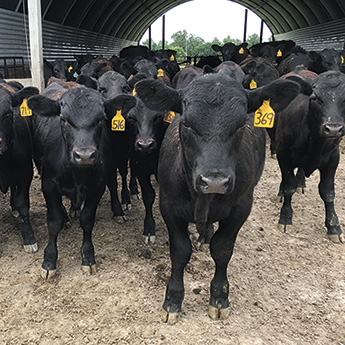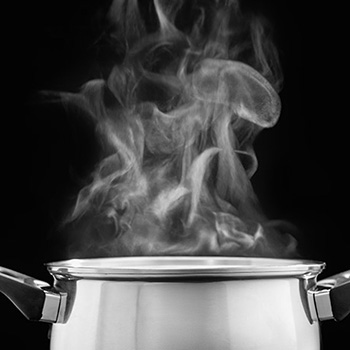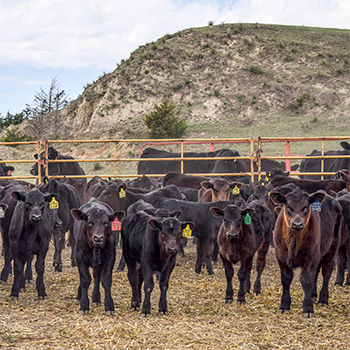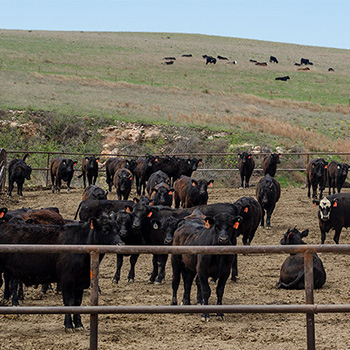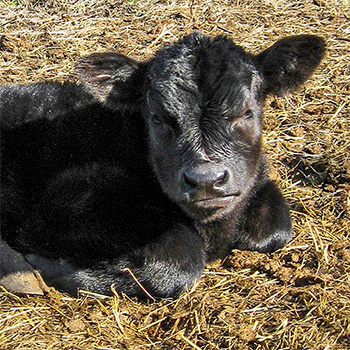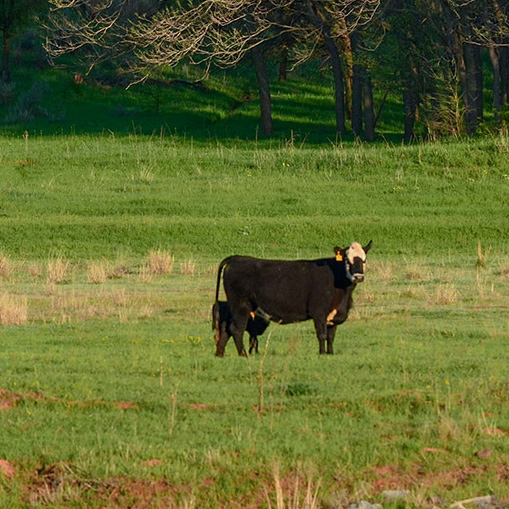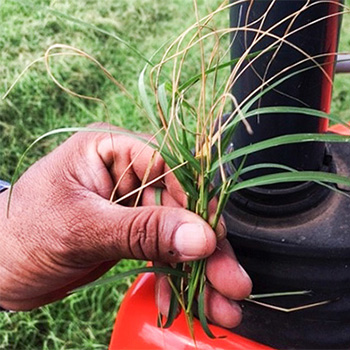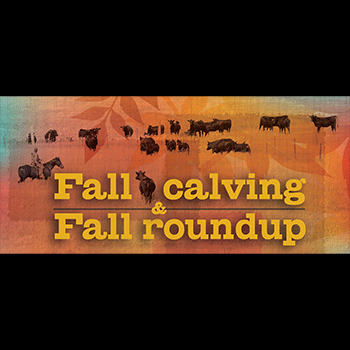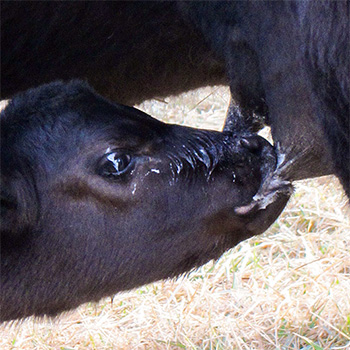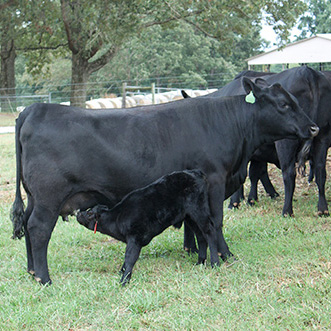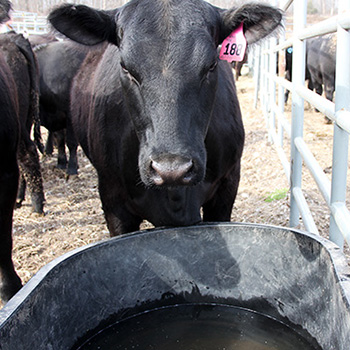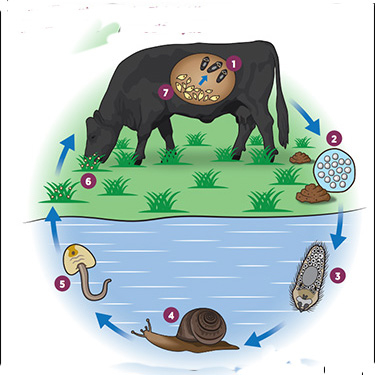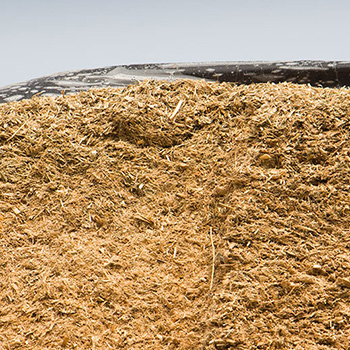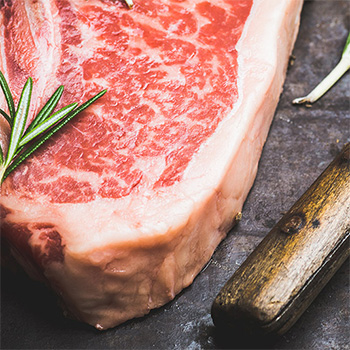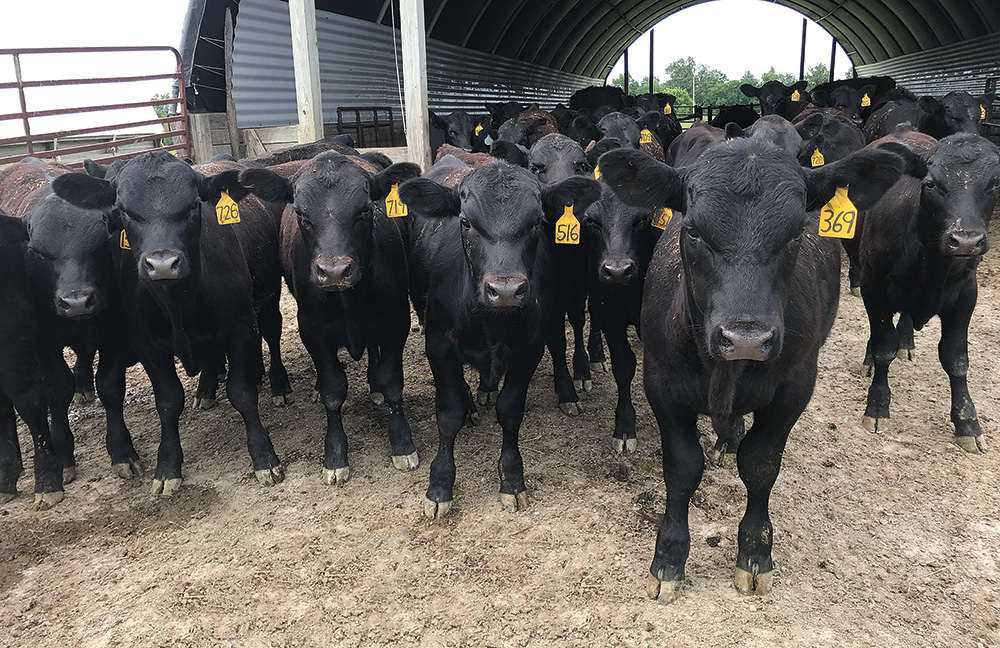
No Bawl Babies Here
Readers share their tips for weaning calves.
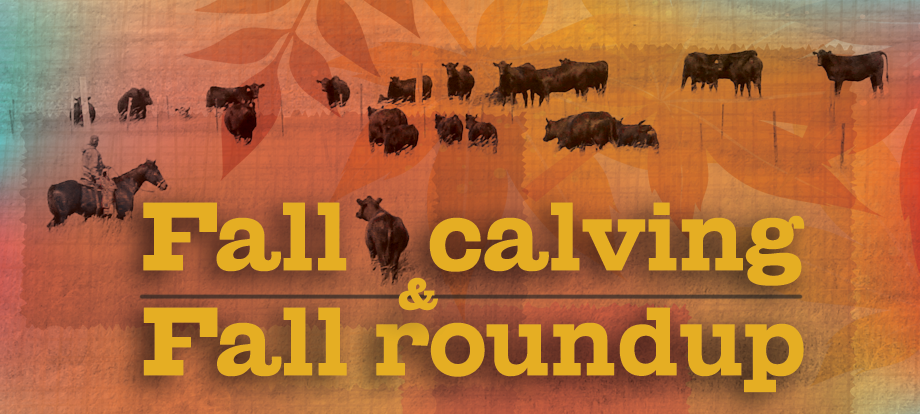
“The traditional weaning process is difficult for the cow and the calf because of physical and psychological stresses to both,” says Bob Nusbaum, professor emeritus at the University of Wisconsin–Platteville. “The cow experiences an uncomfortable udder, and she misses her calf. The calf is generally locked in a lot without grass, is [given] an unfamiliar diet and misses mom. This causes lots of noisy bawling.”
The calves pace constantly and may not feel like eating, he continues. The sudden change in lifestyle usually results in weight loss and, sometimes, sickness.
Finding ways to make weaning less stressful can add to a rancher’s quality of life by lessening the raucousness after weaning, as well as the worry and work associated with sick calves. We asked you, our Angus Beef Bulletin EXTRA audience, for tips for weaning. Here are your responses.
Have a plan
“Too often, we just go out and wean. We find a break in the weather and decide it’s time,” says Chris Forcherio, beef research manager at Purina Animal Nutrition. “The ‘just do it’ mentality may work out, but much like you plan for breeding and calving every year, you should plan when to wean calves.”
Develop a flexible plan at least a month in advance, Forcherio advises. “Planning ahead a month gives you time to order feed, work on your health program, order vaccines and more.”
Prep with vaccinations
Give two rounds of shots before weaning with the last shot (booster) given at least a month before weaning, advises Joe Elliott of Robert Elliott & Sons, Adams, Tenn. With his family in the cattle business for more than 100 years and in the Angus seedstock business since 1935, Elliott admits he’s learned how to wean calves from mistakes made in the past.
“Yes, it costs money to work the cattle twice before weaning,” he says, “but what is the postweaning growth rate of a bunch of sick calves? How much does it cost to treat a bunch of sick calves? I think we all know what the growth rate of a dead calf is, and we know what they are worth.
“Cut your risk. Protect your calves,” he emphasizes.
A good vaccination program is key to reducing sickness, agrees Julie Walker, beef specialist, South Dakota State University, emphasizing that the specifics of each individual program need to be designed with the producer’s veterinarian. Key is ensuring the vaccines are administered early enough to be effective by weaning time.
She cautions producers to be careful when handling vaccines to safeguard their effectiveness.
Robb Forman, Trinity Farms, Ellensburg, Wash., is a big proponent of cattle health, and promotes the subject at both of the farm’s annual sales. They invite product reps to visit with customers and offer health-specific presentations at their Cattlemen’s Gathering educational program hosted with their October sale.
The ranch has a very stringent modified-live-virus (MLV) vaccination program, says Forman, but he adds, “It is best for each producer to visit with their particular animal health professionals and veterinarian in their specific area, as they will be most aware of specific challenges that need to be addressed.
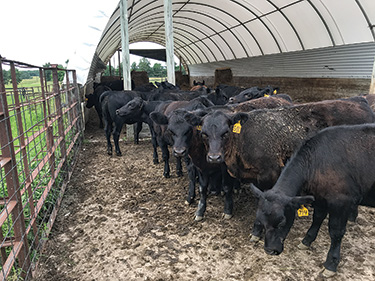 |
| If you have to wean into a corral, get calves familiar with “new” feeds prior to weaning. This can be through creep-feeding or simply feeding the cows and calves for a few weeks prior to weaning. |
“As important as a thorough vaccination protocol is, proper nutrition (including adequate mineral) and access to clean, fresh water is paramount in a successful weaning experience,” says Forman.
First bites
“We’ve found the last several years the easiest way to wean calves is to put the creep feeders out with the cows and calves about 60 days prior,” shares James Coffey of Branch View Angus, Hustonville, Ky. At weaning, he pulls the creep feeders into small lots, separating heifers and bulls into different groups.
“After two to three days, the calves have quit bawling and we move them to a grow lot,” he notes, adding they aren’t set up for fenceline weaning. “Having the calves on the same feed they were on in the pasture has greatly decreased the stress.”
Garrett Mattox of Mattox Angus Ranch prefers to hand-feed creep feed to his calves rather than providing a self-feeder.
“This helps them get used to being around me and gets them used to a bunk,” says the Anna, Ill., cattleman. “Hand-feeding them creep has proven to me that it helps them stay on feed when I separate them.”
When he weans the calves, he says, he either uses fenceline weaning or weans the calves in a pen just down from their moms. If they do bawl, it’s not for very long.
Enid, Miss., cattlewoman Melissa Sturgis, Sturgis Farms, says she tries to get her herd up one day a week for four weeks before taking calves off their mama.
“This way the calves know what feed is and where water in my weaning pen is located,” she explains. “I will wait around a week after weaning to vaccinate and deworm. Usually they have calmed down and are eating feed good.
“I have my feedbunks spread out inside my weaning pen so calves that walk a few days after weaning will always come into contact,” she continues. “After two weeks my calves are running to me when it is feed time.”
Timing
Nusbaum, who also manages Bonus Angus Farm, Potosi, Wis., recommends timing weaning when the weather is most ideal. He weans April-born calves in mid-September at an age range of 120-150 days.
“We feel that these younger calves wean more easily than those over 7 months of age, and our cows stay in better condition,” says Nusbaum.
September also provides more consistently good weather, whereas October can vary from nice and sunny to cold and wet overnight. Those swings can cause problems with illness.
How early is too early? Nusbaum shares that drought prompted a friend in Australia to wean as young as 10-12 weeks of age (less than 200 pounds). He had excellent success and continued the practice. Getting calves weaned onto the best grass was better for the calves and allowed the cows to begin cycling earlier.
When planning when to wean, SDSU’s Walker recommends weaning calves early in the week. Weekends can get a little crazy with other activities, and often a different person may fill in for feedings and observations, she explains. Animals may not be observed as closely as they should be, feedings may be shuffled and details can be overlooked if caretakers are in a hurry.
Paul Arthur, Rocking A Ranch, Berryville, Ark., weans by the dark of the moon and turns off all lights — yard light, porch lights and house lights — that reflect on the weaning pens.
Making the sort
“Most of our gathering and subsequent sorting is best accomplished in our sorting alley next to some large pens,” says Trinity Farms’ Forman. The setup allows for a three-way sort at the bottom of the alley. The majority of the cows will self-sort to the front as they know this is the path back to the pasture.
LJ Olson, Grass Range, Mont., adds a calf escape gate to the sorting mix. By installing a creep gate or taking the bottom couple of rails off the fence of a calf trap positioned adjacent to the alley the cows use to head back to pasture, Olson uses the bovine’s natural behavior to sort the pairs.
One person is positioned at the entrance of the cow alley, opposite the calf creep gate, he explains. With someone gently pushing on the back side of the herd, the cows will enter the alley to head back to pasture. The calves will shy away from the person, but follow mama and escape into the weaning pen through the creep gate.
Olson shares three videos showing the strategy in action: http://bit.ly/Olson-creep-gate, http://bit.ly/creep-gate-2, and http://bit.ly/rail-removed.
Author Heather Smith Thomas explained the sorting strategy in an Angus Beef Bulletin EXTRA article available at http://bit.ly/calf-sort-EXTRA.
Weaning methods
Elliott recommends fenceline weaning, placing calves on one side of a good — emphasis on good — fence and cows on the other side.
“This will cut weaning time by 25%-35%,” he says.
Trinity Farms’ Forman agrees fenceline weaning drastically reduces the bawling and pacing, minimizing stress.
“We have had great success mixing some older, previously weaned calves in with fresh-weaned calves,” adds Forman. The older calves tend to keep the whole bunch calmer and teach the younger calves to eat and drink. “Monkey see, monkey do.”
Los Molinos, Calif., cattleman Jeremy Strand of Split Creek Ranch says he applies QuietWean nose flaps as they vaccinate calves for the third time at about 200 days of age (see Angus Beef Bulletin EXTRA article on nose flaps at http://bit.ly/noseflap).
“We turn the calf back out with the dam for another week to adjust to weaning off milk,” he explains. “A week later, we fenceline wean the calf and have found the calves experience a significant stress reduction and stay on feed, and the dam does not call for the calf because her bag has had a week to begin drying.”
Zoe Moritz, Fairfield, Iowa, also uses nose clips to wean.
“It’s an extra trip through the chute, but is a lot less stress for both cows and calves — and me since there is no crying,” Moritz shares.
The nose flaps allow calves to graze but prevent nursing, allowing the calves to wean off milk but stay with their mama, explains Kenny Elrod, Spring Creek Ranch, Pleasant View, Tenn. Elrod leaves flaps in for a week to 10 days. There’s a lot less bawling when the pairs are separated, he notes.
The only thing Nusbaum does to the calves on weaning day is put them through the chute to remove the nose flaps and put the calves in a pasture with very good grass directly across the fence from their mothers.
“We use a five-strand, high-tensile electric wire, but woven wire works, too,” says Nusbaum. “Barbed wire generally is not recommended alone, but it could be used with an electric wire on both sides.”
Nusbaum weans in the morning, starting about 9 a.m.
Sharing his experience with the technique, Nusbaum says both groups grazed with almost no bawling during the first several hours. About 5 p.m. or so, both groups bawled, but not much.
“We had an adjacent pasture for the cows to go into, which many of them did,” he says. “The ones that left came back to check on their calves periodically, but all of the cows seemed content to graze within view of their calves. The calves bawled less than the cows and constantly grazed. By noon the next day, there were only about six cows still in the pasture across from the calves, and it was quiet — no bawling from either side. After 36 hours it was completely quiet.”
Describing a more unique system, Jeff Ramseyer of Cutter Farms, West Salem, Ohio, says since they don’t start calving until mid-May they don’t do any weaning until 60 days before the first cows are due to have their next calf. They pull only the steer calves, separating them into an adjacent pasture. Heifer calves are left with their mothers.
“The cows basically wean the calves off of milk during the winter, so there is very little bawling,” he says.
While Walker recommends fenceline weaning by keeping the calves in a familiar pasture, she recognizes not all producers have the right setup. Leaving the cows in the corral and putting the calves back out to pasture is an option.
“If you have to wean into a corral, get calves familiar with ‘new’ feeds prior to weaning,” she advises. This can be through creep-feeding or simply feeding the cows and calves for a few weeks prior to weaning. Producers need to evaluate the cost of the feeding.
“Avoid fermented feeds until calves are consuming the ‘normal’ amount of feedstuffs,” she says.
Feed and water
“If you can get calves eating quickly, they’re more likely to overcome stress and sickness,” says Ted Perry, beef technical solutions at Purina Animal Nutrition. The physical form of the feed can influence consumption, he adds.
“Bigger pellets tend to work best for calf starter feeds because they are softer,” he explains. “Bigger pellets also allow calves to get more with every mouthful, which is essential for less-aggressive calves standing at the bunk.”
Perry recommends avoiding mealy feeds, which often separate and become less appealing to calves during weaning.
Make sure your calves have feed they will eat and good clean water, says Elliott. Provide a free-choice forage that they like. Place the feedbunks, good clean water and forage where they will find these things. Calves will start walking the fence shortly after being taken from their dams, so place the bunks, water and forage as close to the fence as possible.
“We often put feedbunks in a place that’s convenient for people, not for cattle,” says Purina’s Forcherio. He advises producers to place feedbunks in an area where calves will run into them. Bunks should be placed perpendicular to fencelines so calves can bump into feed as they are circling the fences.
To prevent calves from competing for bunk space, Forcherio recommends providing 12 inches (in.) of bunk space for hand-fed feeds and 6-8 in. of bunk space for self-fed feeds.
“Make sure your water trough is not too tall,” Forcherio advises. “Don’t assume that 400- or 450-pound calves are going to be able to reach the same waterers set up for 1,200-pound cows.”
The same concept applies to hay feeders, he adds. If the hay ring is out, and the round bale is in the hay ring, but the calves can’t reach the tower of hay in the middle, you’ve got a problem.”
Other details
Tennessee’s Joe Elliott recommends providing lots of shade and high ground in the weaning pen. No shade and mud invite sickness among calves, he explains.
“If it is cold where you live, provide protection from the weather,” Elliott adds.
There are almost as many weaning strategies as there are cattlemen and women, Nusbaum observes. Each producer should talk to their veterinarian to discuss health protocols tailored to their location and marketing programs.
Editor's note: This article first appeared in the September Angus Beef Bulletin. Subscribe at https://www.angus.org/ Media/Advertising/ ABBSubscr.aspx.
